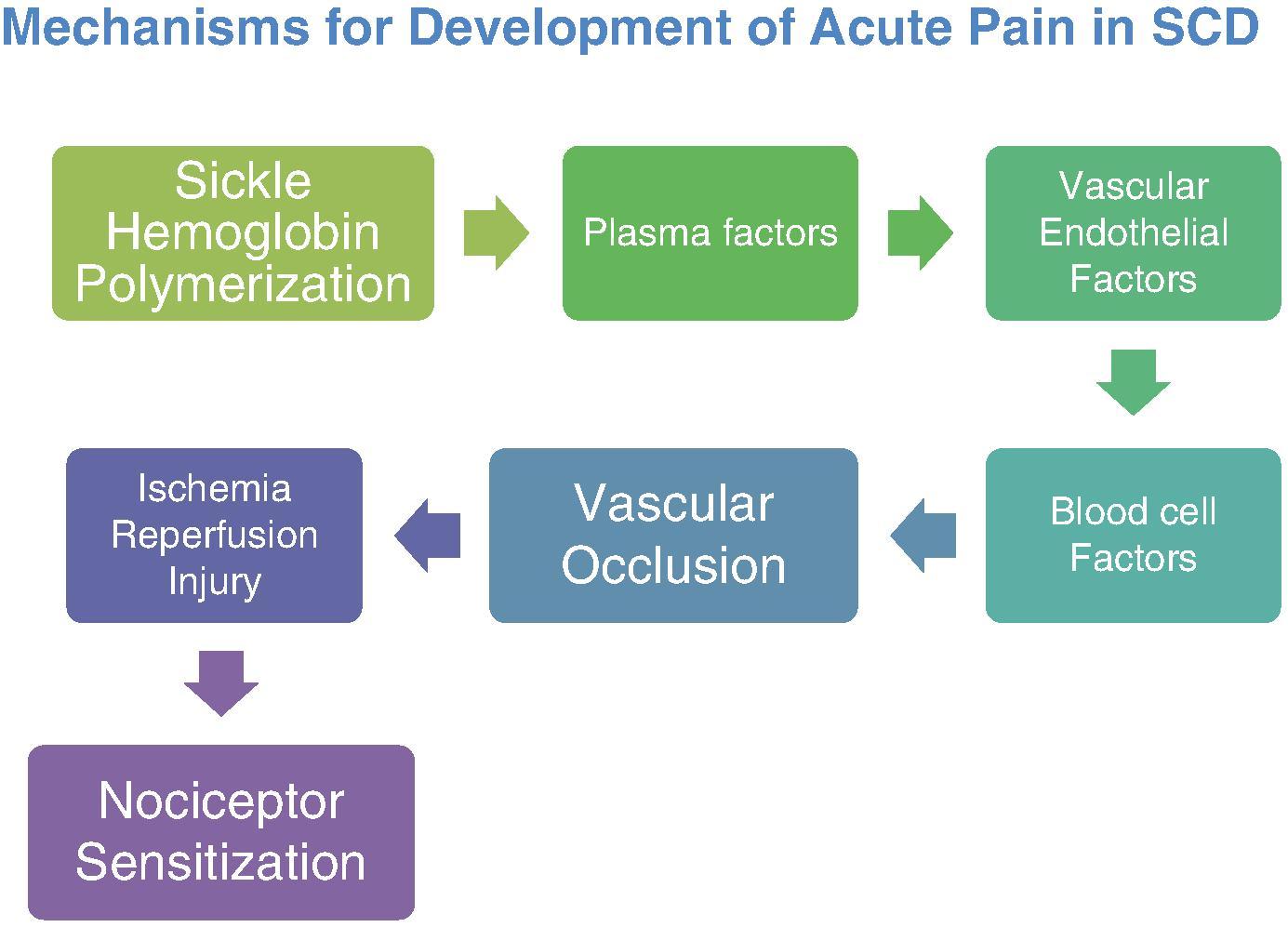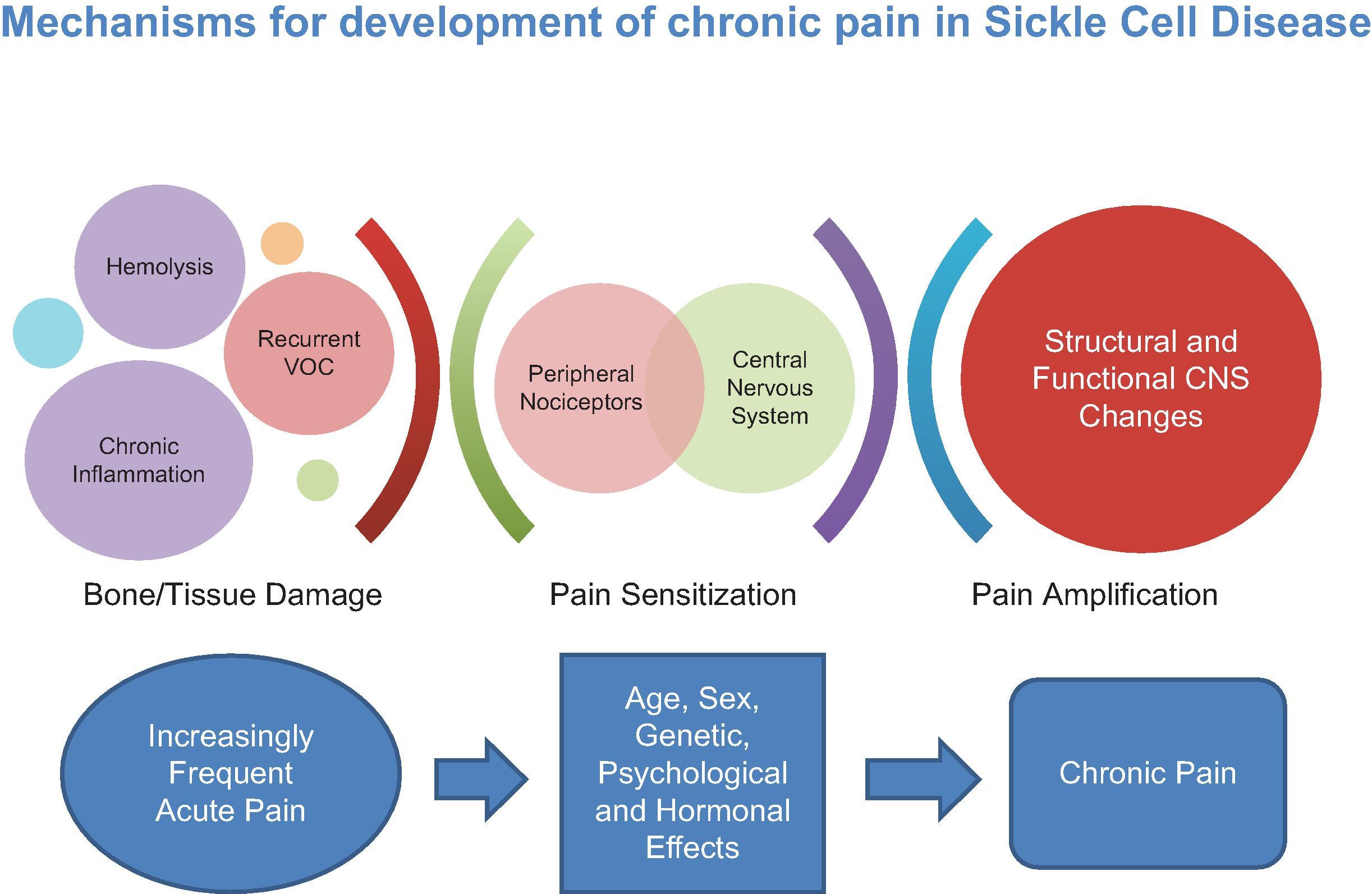Physical Address
304 North Cardinal St.
Dorchester Center, MA 02124
Sickle hemoglobin results from a replacement of glutamine with valine at the sixth amino acid position in the b-globin subunit. Molecules of this abnormal hemoglobin polymerize upon deoxygenation into long polymers that physically deform the erythrocyte into the characteristic sickle shape and ultimately obstruct blood flow. This polymerization largely ceases when adult hemoglobin is present with sickle hemoglobin, the so-called sickle trait, or with high levels of fetal hemoglobin, resulting in relatively benign conditions. In contrast, this polymer formation is promoted to varying degrees by the co-occurrence of sickle hemoglobin with other inherited abnormal hemoglobin, such as hemoglobin C, D, E, or O arab , or mutations that reduce the production of normal hemoglobin (thalassemia), resulting in sickling disorders of varying degrees of hemolytic severity. Given the large phenotypic variability seen in this group of hemoglobin disorders, they collectively are often referred to as sickle cell disease (SCD).
Recent whole genome sequencing suggests that the sickle mutation arose over 7,000 years ago, either in the Sahara or in west-central Africa. Its prevalence was maintained and expanded in these areas by reproductive advantage as sickle trait provided some degree of protection from severe malaria. Thus most of the 100,000 to 150,000 individuals with SCD in the United States trace their ethnic origins to Africa, the Middle East, or the Mediterranean where malaria was endemic; the slave trade to the Caribbean and South America also led to the spread of the sickle mutation to many individuals of Hispanic ethnicity.
The pathophysiology of vaso-occlusive pain in SCD is quite complex ( Fig. 77.1 ). Once deoxygenated, sickle hemoglobin undergoes a polymerization process that ultimately deforms the erythrocyte into the characteristic sickle shape. If the time required to complete this process, the “delay time,” is longer than the time required for these erythrocytes to reach larger venous vessels, then vaso-occlusion will not occur. Factors that slow the transit time of erythrocytes through the microcirculation will enhance the likelihood of vaso-occlusion, including changes in vascular tone and adhesion of erythrocytes, and other cellular elements, including leukocytes and platelets, to vascular endothelium altered by chronic hemolysis. As part of this “vicious cycle” of sickling, the subsequent ischemic/reperfusion injury from initial vaso-occlusion results in the accumulation of endogenous mediators released from cells that reside within or infiltrate into the injured area (including mast cells, basophils, platelets, macrophages, neutrophils, endothelial cells, keratinocytes, and fibroblasts). Collectively, these inflammatory mediators represent a wide array of signaling molecules, including neurotransmitters, peptides, eicosanoids, and related lipids, cytokines, and chemokines, which damage local nociceptive nerves leading to increased spontaneous firing that is perceived as acute pain.

Although considerable further research is needed to confirm this process, the intense and repetitive nature of vaso-occlusive events and resulting chronic tissue/bone damage likely drive the development of chronic pain in adolescents and adults with SCD, ( Fig. 77.2 ) likely through a process termed central sensitization, which represents an activity- or use-dependent form of functional synaptic plasticity that can occur after intense, repetitive noxious stimuli. Central sensitization with its augmented pain response and a symptom cluster denoting sleep difficulties, pain, affect, cognitive difficulties, and fatigue occurs by complex processes that change the response elicited by normal sensory inputs, including those that usually evoke innocuous sensations, resulting in the sensation of persistent pain. Further changes in the pain experienced in chronic pain disorders occur because of anatomic and functional connectivity changes in various brain regions.

SCD is a relatively unique pain disorder, as pain can begin early in the first year of life as levels of fetal hemoglobin decline in susceptible individuals. Most children reported to have pain in the first year of life have pain locations (hands/feet) and signs/symptoms (swelling or tenderness) consistent with dactylitis, often referred to as “hand-foot syndrome,” which becomes progressively less prevalent in older children and rare after five to seven years of age. Almost all children with SCD experience increasingly frequent pain throughout childhood and into adolescence and young adulthood. However, most of these painful episodes are managed at home rather than in acute care settings. Most episodes are relatively brief, typically two to three days, with the pain of moderate intensity located in a small number of body sites, usually the lower legs, back, and chest wall, with pain intensities often peaking in the late evening. , Some studies have suggested environmental triggers for these painful episodes, such as changes in weather, or air quality, while others have highlighted the role of stress, potentially mediated by changes in vascular tone.
A small number of children transition, often in their early adolescent years, from a pattern of sporadic episodes of brief acute pain to frequent, recurrent, acute pain with or without chronic pain. These individuals represent the majority of pediatric patients hospitalized for acute pain. Pain is a more complex experience in adults with SCD, with features of both acute recurrent and chronic pain, , and is more often managed in an acute care setting compared to pain in children. Sociodemographic, family, and disease characteristics and mental health issues are often comorbidities contributing to frequent healthcare utilization in SCD adults with hronic pain. , Detailed taxonomies describing acute pain, and chronic pain in SCD have been recently published.
Vaso-occlusive pain in SCD remains a clinical diagnosis as laboratory and imaging studies largely show non-specific increases in inflammatory markers and increased hemolysis. Other pain syndromes distinct from vaso-occlusive episodes are not uncommon and always need to be considered when evaluating an individual with SCD and pain ( Table 77.1 ). Children and, occasionally, young adults can experience acute left-upper-quadrant visceral pain from rapid enlargement of the splenic capsule consistent with acute splenic sequestration, an often life-threatening trapping of sickled erythrocytes and platelets in the spleen. Almost all children with SCD will experience episodic right-upper-quadrant colicky abdominal pain and jaundice from cholelithiasis or bile duct obstruction and ultimately require cholecystectomy, as chronic hemolysis results in bilirubin accumulation in the gallbladder and the subsequent production of pigment stones. Avascular necrosis in the vertebral column, shoulder, or hips can be a source of acute pain as well as chronic pain in adolescent and young adult patients, who often respond to physical therapy for initial symptom management of hip pain; some patients, however, have progressive collapse, particularly in the head of the femur, that will ultimately require joint replacement for relief of chronic pain or to improve physical functioning. Although uncommon in the pediatric age group, leg ulcers, typically over the medial malleolus of either or both ankles, can be a source of considerable pain and disability, and are challenging to manage. Headaches, as an isolated pain syndrome or as part of a vaso-occlusive event, can occur but are not well characterized. Some have features characteristic of migraine headaches, others may be more typical of tension-type headaches, and a small number of individuals satisfy current diagnostic criteria for chronic daily headaches. The use of the triptan class of medications to treat migraine-like headaches in SCD individuals is contraindicated because of cardiovascular concerns.
| Pain Syndrome | Typical Locations | Pain Characteristics |
| Acute splenic sequestration | Spleen | Acute visceral pain related to stretch of the splenic capsule from splenic enlargement |
| Splenic infarction | Spleen | Acute visceral pain from splenic infarction involving splenic tissue extending to splenic capsule |
| Acute bone infarction | Ribs, sternum, or long bones | Acute pain from necrosis of bone marrow |
| Avascular necrosis | Hips, shoulders, or vertebrae | Acute and chronic pain from progressive collapse of bone cortex related to persistent vascular compromise |
| Osteomyelitis | Any bone | Acute and chronic pain from bacterial infection of bone cortex or marrow, often related to chronic ischemia |
| Acute cholelithiasis | Gallbladder | Acute visceral pain from irritation or common bile duct obstruction by pigment gallstones |
| Leg ulcers | Medial or lateral ankles | Acute and chronic pain from ischemic damage to the skin and underlying soft tissue |
| Headache | Head | Acute or chronic headache pain with or without migrainous aura or characteristics |
Become a Clinical Tree membership for Full access and enjoy Unlimited articles
If you are a member. Log in here